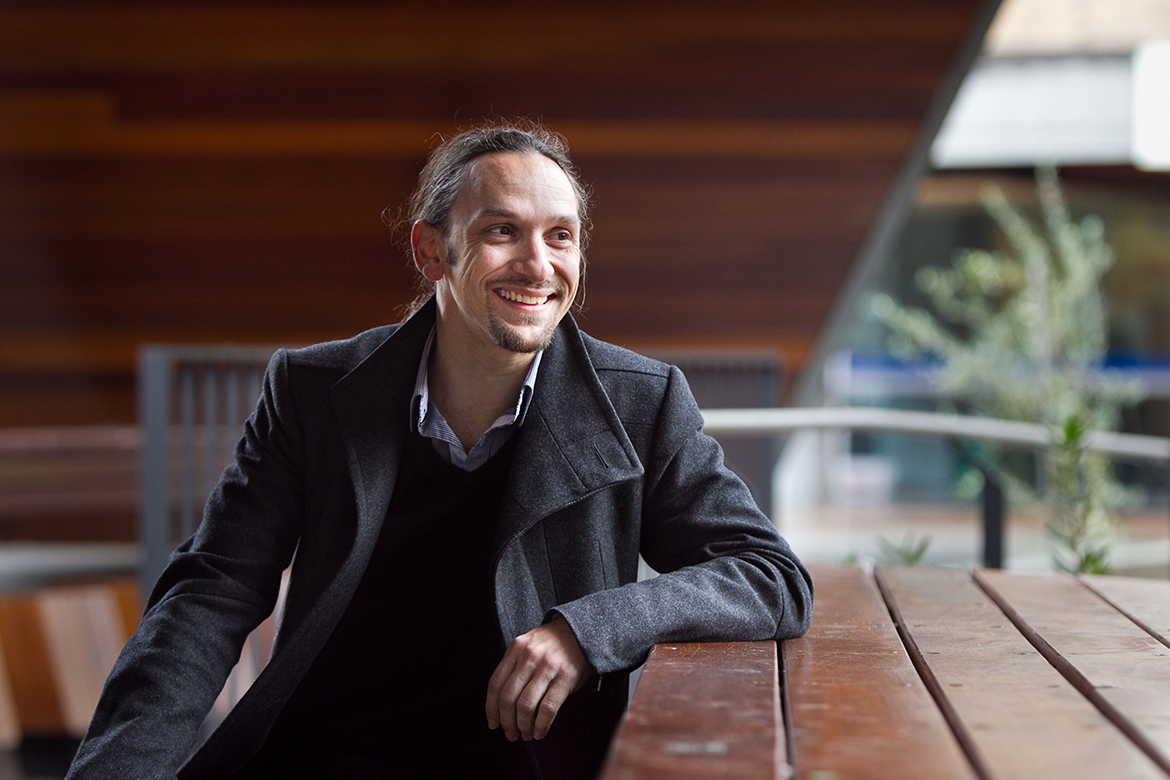Through insight and expertise, Jefa Greenaway has forged a career highlighting Indigenous perspectives in architecture and design. He’s a powerful force for change, a man to be followed and his ideas emulated.
As a practitioner, a spokesperson for Indigenous design, an orator and advocate, Greenaway is the total package, wrapped in yellowtrace – architect style.
Greenaway is a Wailwan/Kamilaroi man originally from New South Wales and he is helping to re-define architecture for all of us, especially the next generation of First Nations architects.
Throughout his life, Greenaway has worked hard and stood up for his beliefs. He sees architecture as inherently political, explaining, “If we look at architecture and design more broadly, it’s often mediated through a dynamic which means those who have the capacity and the means can realise built form outcomes. Invariably, when we engage with notions of Indigenous design the question then becomes how do we facilitate true agency? And how do we actually empower Indigenous voice and ensure reciprocity as part of the process of design?”
Greenaway’s journey to architecture came by a circuitous route. He commenced a three-year architectural drafting diploma, and in his final year began a Bachelor of Arts in Political Science at La Trobe University. His tutor proved to be an inspiring influence who guided him to architecture through a letter of introduction to the then Dean of Architecture at The University of Melbourne, Professor Evan Walker. The rest, as they say, is history as Greenaway transferred to Melbourne University and continued studying Political Science and an Architecture degree concurrently.
In the 1990s, Greenaway was the only Indigenous student at the architecture faculty at Melbourne University but to connect culturally, he liaised with students from other disciplines at the Koorie Student Liaison Unit and this helped provide both balance and support.
Being at university is not only about learning but also social networking with a need to connect to the university community, and over the next six years studying, Greenaway certainly made a place for himself.
In 1998, along with his soon to be wife, Catherine Drosinos, also a gifted architect, the genesis of Greenaway Architects was established. The impetus came from Catherine to commence the practice but together the pair made a name for themselves and projects began.
Teaching has always run parallel to practice for Greenaway and he sees them as inseparable. To this end, Greenaway has been integrally involved with curriculum development to help Indigenise design education and embed notions of design equity, particularly through the undergraduate degree, the Bachelor of Design, at The University of Melbourne and more recently as an Honorary Fellow of Design at Deakin University.
Meanwhile, Greenaway Architects has changed over the years, from creating bespoke residential projects to large public works, landscape and urban design projects. On the books at the moment are the Marvel Stadium upgrade, a major Court project with Lyons Architects, the North-East Link as well as university projects.
Greenaway has twice been represented at the Venice Biennale. He has also been involved with the design of the Koori Heritage Trust in Federation Square and together with Rueben Berg, founded Indigenous Architecture + Design Victoria (IADV) in 2010. He has co-authored the International Indigenous Design Charter, is Regional Ambassador (Oceania) of INDIGO (International Indigenous Design Network) and was inducted to the Design Institute Hall of Fame in 2020.
This is an excerpt from the full article first published on Indesignlive.com. Words by Jan Henderson.
Photography: Courtesy of Greenaway Architects


